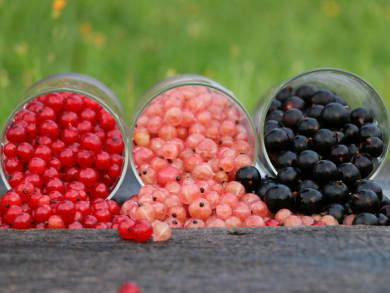Antioxidants are added to foods to help keep them fresh as well as to provide health benefits. Using food to extract antioxidants for industrial use when it could also be eaten directly is controversial. Using waste products from food production, in contrast, could provide a sustainable source of antioxidants.
Heikki P. Kallio, University of Turku, Finland, and colleagues have performed a study on the antioxidant properties of press residues from the production of Finnish black and red currant as well as sea buckthorn berry juices. The team cold-pressed the berry samples, extracted the residues with ethanol, and used oxygen radical absorbance capacity (ORAC), total peroxyl radical-trapping antioxidant capacity (TRAP), and diphenylpicrylhydrazyl (DPPH) assays to evaluate the antioxidant properties of the extracts.
The researchers found that the levels of total reducing compounds in the berry residues were higher than in many fruits and that the extracted compounds showed significant radical quenching activity. Black currant residue had the highest authentic phenol content and reactivity in the used assays. Sea buckthorn residue showed extremely high total specific reactivity with the radical DPPH. According to the team, the results indicate that berry waste could be a useful source of antioxidants for use in foods and dietary supplements.
- Red/Green Currant and Sea Buckthorn Berry Press Residues as Potential Sources of Antioxidants for Food Use,
Anna Puganen, Heikki P. Kallio, Karen M. Schaich, Jukka-Pekka Suomela, Baoru Yang,
J. Agric. Food Chem. 2018.
https://doi.org/10.1021/acs.jafc.8b00177



